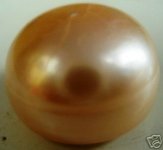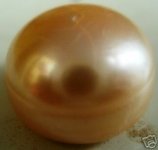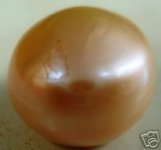How big in diameter is and 11 carat pearl?
I find several of his remarks puzzling. Like the weight of Basra pearls as opposed to others. to my understanding Basra pearls are from the
pinctada radiata the usual Persian Gulf pearl oyster. There is nothing very different in its weight than any other natural pearl. Maybe Basra lost its
p radiatas, but they are flouishing in other parts of the gulf, like around Bahrain.
He seems clueless about other pearls. Maybe he is talking about cultured pearls as opposed to natural when he talks about the chalky centers. That is a mistake. No natural pearl would be chalky on the inside and shiny on the outside- if that is what he means. If the pearl is chalky, it is chalky on the outside too and therefore an inferior pearl.
Cultured pearls have nucleii made from mussel shells. Mussel shells are essentially mother of pearl and they are not chalky.
And Heavens, WHY on earth would he scratch the pearl?

Thats weird! The point is
not to let the pearls get scratched!.
He is correct in saying that natural pearls are composed of layer upon layer of deposits of pearly material (a combination of conchiolin glue with calcium carbonate- which is chalky, but it is changed greatly by the addition of the gluey conchiolin and you don't see the chalky stuff unless its a bad pearl.)
OK Folks, any corrections?

I am not sure about this but Basra is mainly noted for seed pearls, so a larger one is more special. It would also be around 100 years old (at least) if a natural from Basra.



